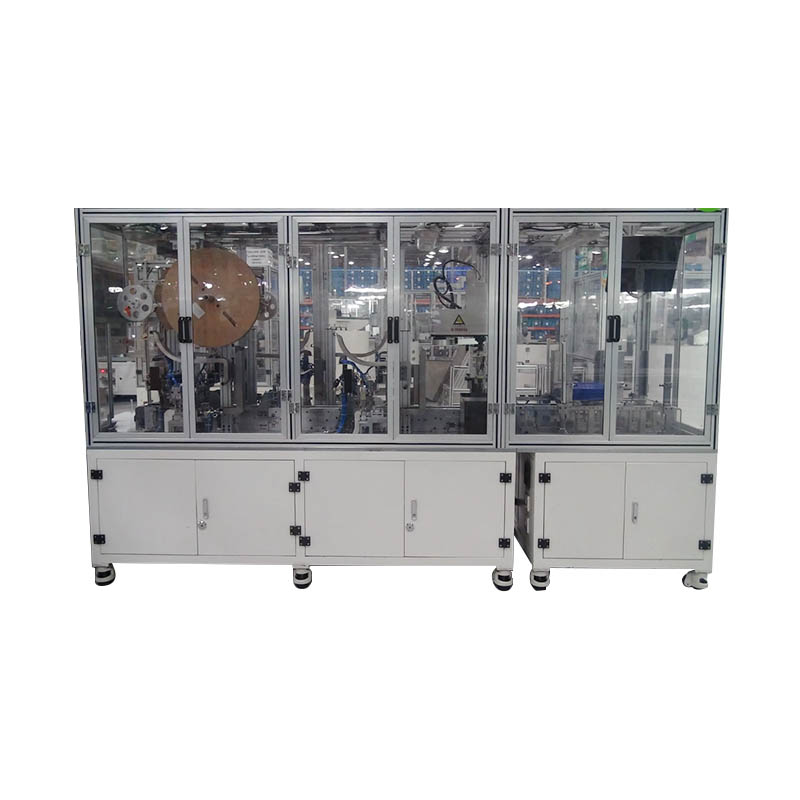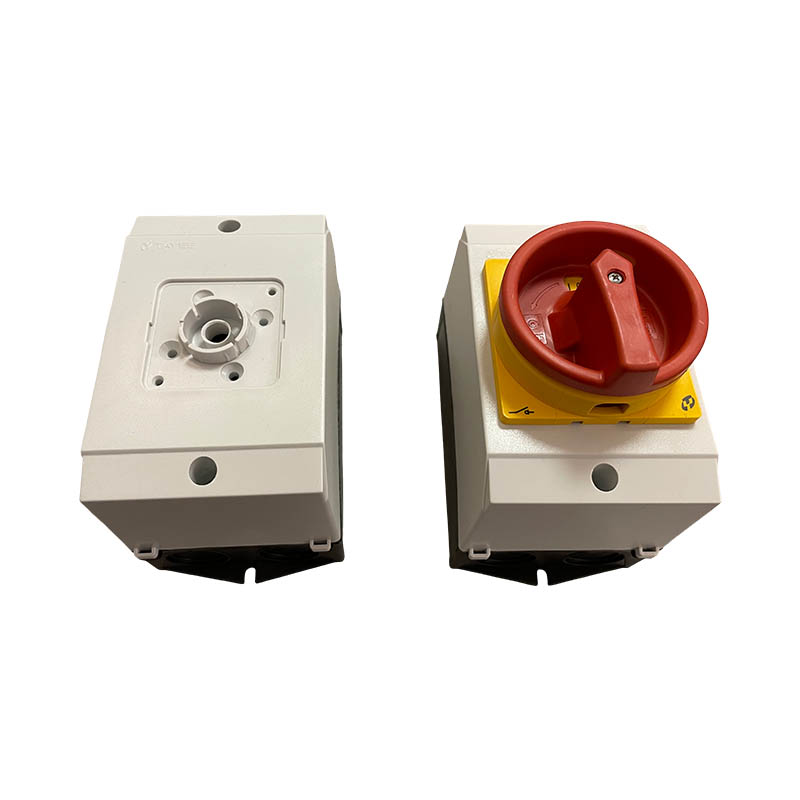How does sheet metal effectively resist external mechanical shocks in mechanical and electrical engineering due to its high strength?
Release Time : 2025-11-07
In modern mechanical and electrical engineering systems, the reliability of equipment depends not only on the performance of its internal components but also on its external protective structure. Sheet metal, as a crucial physical barrier, plays an irreplaceable role in resisting external mechanical shocks, vibrations, compression, and even accidental drops thanks to its excellent high strength, rigidity, and energy absorption capabilities. Whether it's industrial control cabinets, motor equipment, power modules, outdoor communication base stations, or rail transit electrical boxes, sheet metal protects the safe and stable operation of its internal precision components with its robust structure.
1. High-Strength Material: Constructing a Robust First Line of Defense
The effective impact resistance of sheet metal stems primarily from the high strength characteristics of its material. Commonly used metals include cold-rolled steel sheets, stainless steel, aluminum alloys, and magnesium alloys, which far exceed plastics or composite materials in terms of yield strength, tensile strength, and hardness. For example, cold-rolled steel has excellent corrosion resistance and deformation resistance; high-strength aluminum alloys provide good impact toughness while maintaining lightweight properties. When an external object impacts the outer shell, these metal materials can absorb some of the impact energy through elastic deformation, and further dissipate the energy through controlled plastic deformation after exceeding the elastic limit, thus preventing the impact force from being directly transmitted to vulnerable internal components.
2. Structural Design Optimization: Energy Management Combining Rigidity and Flexibility
Materials are the foundation, structure is the soul. Modern sheet metal design not only relies on the strength of the material itself, but also enhances overall impact resistance through scientific geometric configurations. Common reinforcement methods include: adding reinforcing ribs, using bent edges and corners, and setting concave or convex curved surface structures. These designs not only significantly improve the bending and torsional stiffness of the shell, but also guide the impact force along a specific path, avoiding cracks or perforations caused by localized stress concentration. For example, the four corners of electrical control cabinets are often designed with rounded transitions, which reduces stress concentration and improves overall structural stability; while in handheld industrial equipment, the edges of the shell often have cushioned chamfers or embedded elastic sealing rings, achieving a dual protection strategy of "hard shell + soft cushioning".
3. Integrated System Protection: From Single Shell to Overall Safety
In practical engineering applications, sheet metal is often not isolated but forms a complete protection system with internal shock-absorbing supports, guide rails, and partitions. For example, in rail transit or onboard electrical equipment, sheet metal is fixed to a mounting platform with rubber shock absorbers, effectively isolating continuous vibrations from the track or road surface. In high-impact risk scenarios, energy-absorbing materials such as honeycomb aluminum panels and foam metal are added inside the shell, forming a multi-level buffer mechanism. This synergistic design of "impact-resistant shell + internal energy absorption" ensures that even if the equipment encounters a severe collision, the core circuits and mechanical components remain intact.
4. Environmental Adaptability and Long-Term Reliability
In addition to instantaneous impacts, sheet metal must also withstand long-term environmental stresses, such as thermal expansion and contraction caused by temperature changes, corrosion caused by humidity, and dust intrusion. High-strength metal materials themselves possess good thermal stability and weather resistance; combined with surface treatment processes, their corrosion resistance and wear resistance can be further enhanced. This means that even under extreme operating conditions and long-term service, sheet metal can maintain its structural integrity, continuously providing reliable mechanical protection and preventing loss of protective function due to shell aging and embrittlement.
The value of sheet metal in mechanical and electrical engineering goes far beyond simply "wrapping" and "shielding." It is a dynamic protective barrier integrating strength, toughness, intelligent structure, and system integration. Leveraging the inherent advantages of high-strength materials and ingenious engineering design, sheet metal can not only effectively resist sudden mechanical impacts but also ensure the long-term stable operation of equipment in complex and harsh environments.
1. High-Strength Material: Constructing a Robust First Line of Defense
The effective impact resistance of sheet metal stems primarily from the high strength characteristics of its material. Commonly used metals include cold-rolled steel sheets, stainless steel, aluminum alloys, and magnesium alloys, which far exceed plastics or composite materials in terms of yield strength, tensile strength, and hardness. For example, cold-rolled steel has excellent corrosion resistance and deformation resistance; high-strength aluminum alloys provide good impact toughness while maintaining lightweight properties. When an external object impacts the outer shell, these metal materials can absorb some of the impact energy through elastic deformation, and further dissipate the energy through controlled plastic deformation after exceeding the elastic limit, thus preventing the impact force from being directly transmitted to vulnerable internal components.
2. Structural Design Optimization: Energy Management Combining Rigidity and Flexibility
Materials are the foundation, structure is the soul. Modern sheet metal design not only relies on the strength of the material itself, but also enhances overall impact resistance through scientific geometric configurations. Common reinforcement methods include: adding reinforcing ribs, using bent edges and corners, and setting concave or convex curved surface structures. These designs not only significantly improve the bending and torsional stiffness of the shell, but also guide the impact force along a specific path, avoiding cracks or perforations caused by localized stress concentration. For example, the four corners of electrical control cabinets are often designed with rounded transitions, which reduces stress concentration and improves overall structural stability; while in handheld industrial equipment, the edges of the shell often have cushioned chamfers or embedded elastic sealing rings, achieving a dual protection strategy of "hard shell + soft cushioning".
3. Integrated System Protection: From Single Shell to Overall Safety
In practical engineering applications, sheet metal is often not isolated but forms a complete protection system with internal shock-absorbing supports, guide rails, and partitions. For example, in rail transit or onboard electrical equipment, sheet metal is fixed to a mounting platform with rubber shock absorbers, effectively isolating continuous vibrations from the track or road surface. In high-impact risk scenarios, energy-absorbing materials such as honeycomb aluminum panels and foam metal are added inside the shell, forming a multi-level buffer mechanism. This synergistic design of "impact-resistant shell + internal energy absorption" ensures that even if the equipment encounters a severe collision, the core circuits and mechanical components remain intact.
4. Environmental Adaptability and Long-Term Reliability
In addition to instantaneous impacts, sheet metal must also withstand long-term environmental stresses, such as thermal expansion and contraction caused by temperature changes, corrosion caused by humidity, and dust intrusion. High-strength metal materials themselves possess good thermal stability and weather resistance; combined with surface treatment processes, their corrosion resistance and wear resistance can be further enhanced. This means that even under extreme operating conditions and long-term service, sheet metal can maintain its structural integrity, continuously providing reliable mechanical protection and preventing loss of protective function due to shell aging and embrittlement.
The value of sheet metal in mechanical and electrical engineering goes far beyond simply "wrapping" and "shielding." It is a dynamic protective barrier integrating strength, toughness, intelligent structure, and system integration. Leveraging the inherent advantages of high-strength materials and ingenious engineering design, sheet metal can not only effectively resist sudden mechanical impacts but also ensure the long-term stable operation of equipment in complex and harsh environments.







